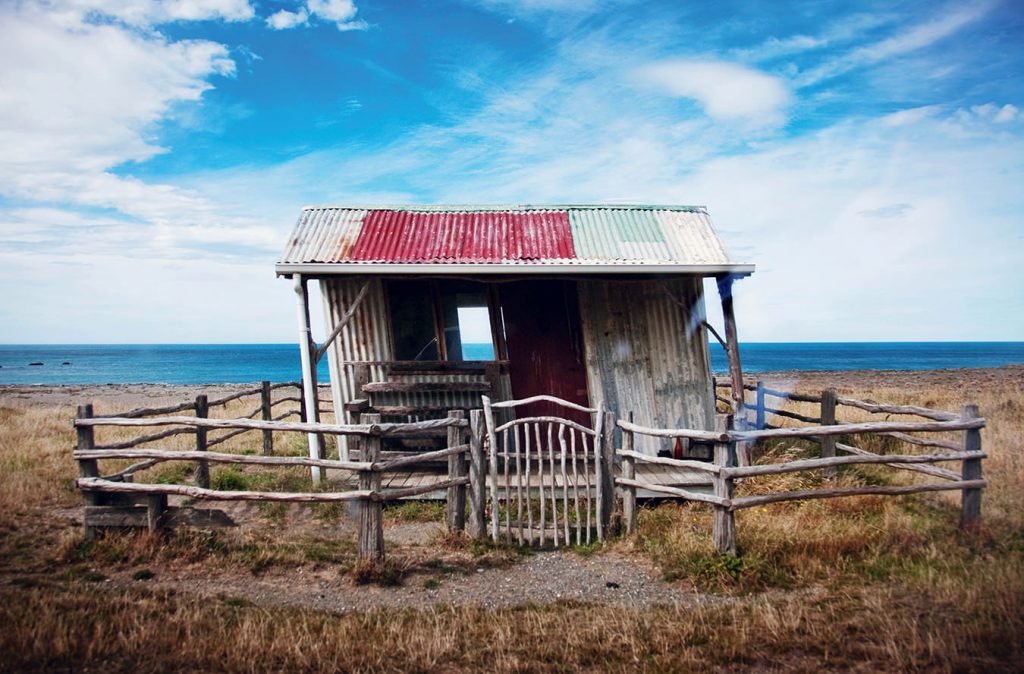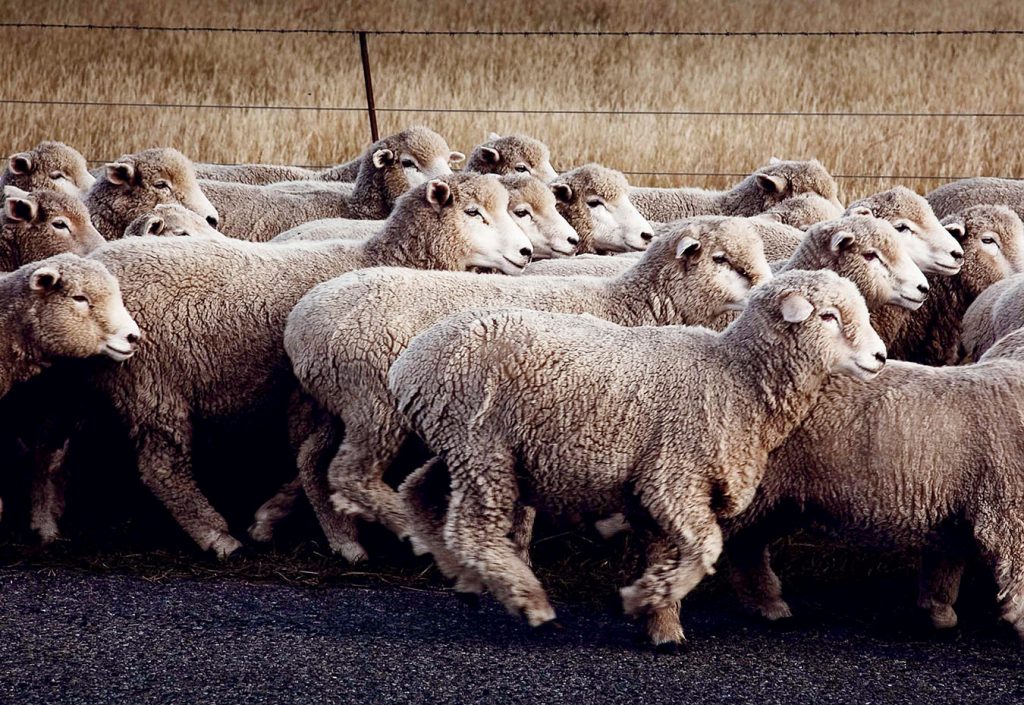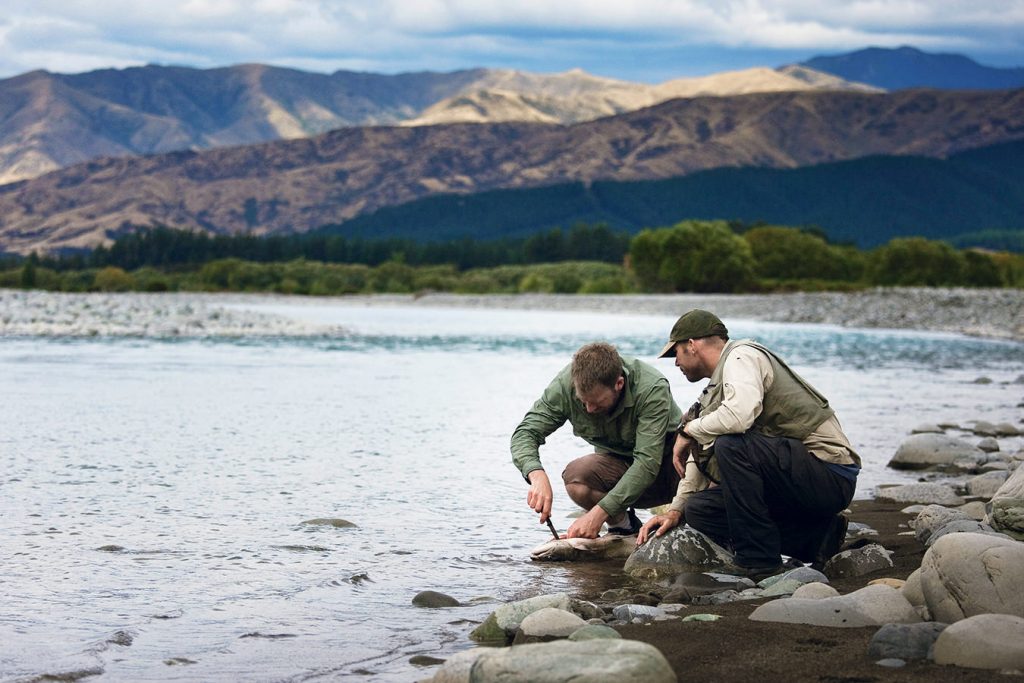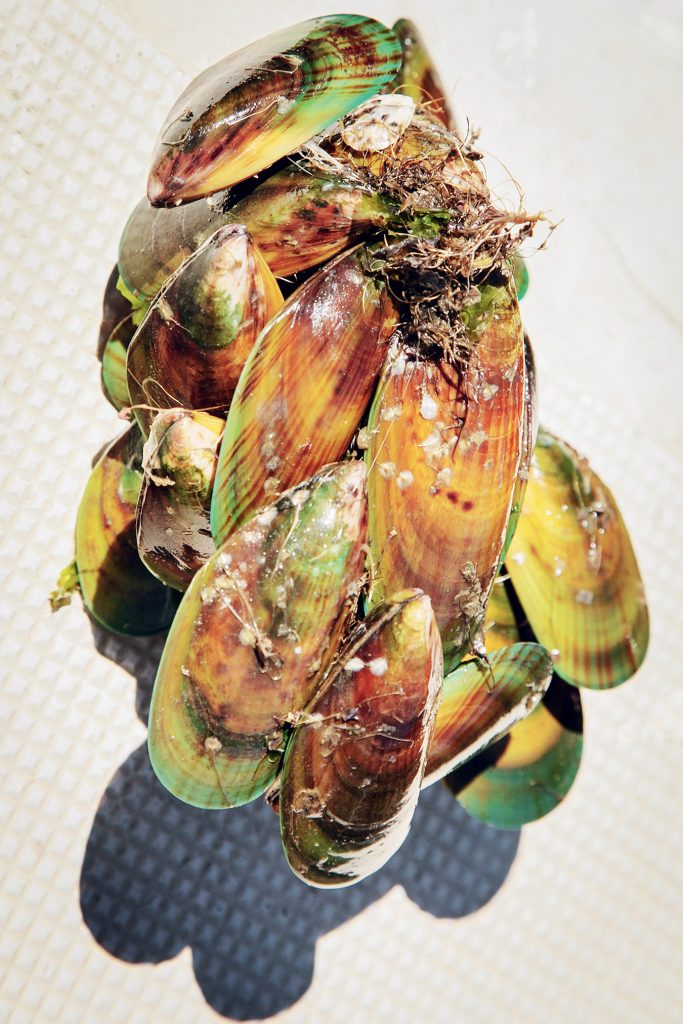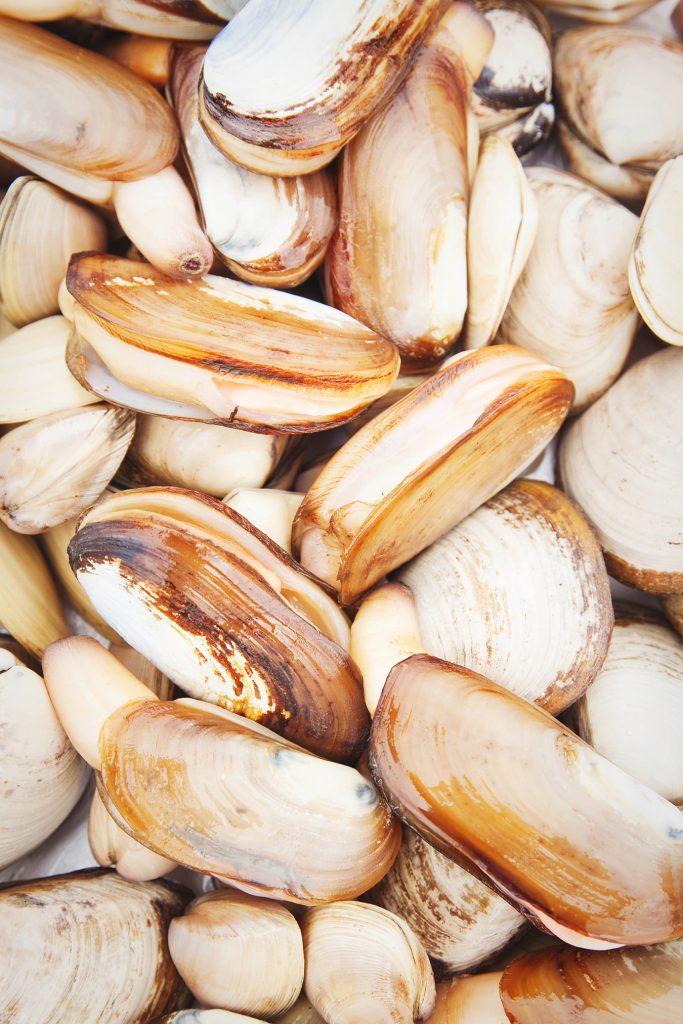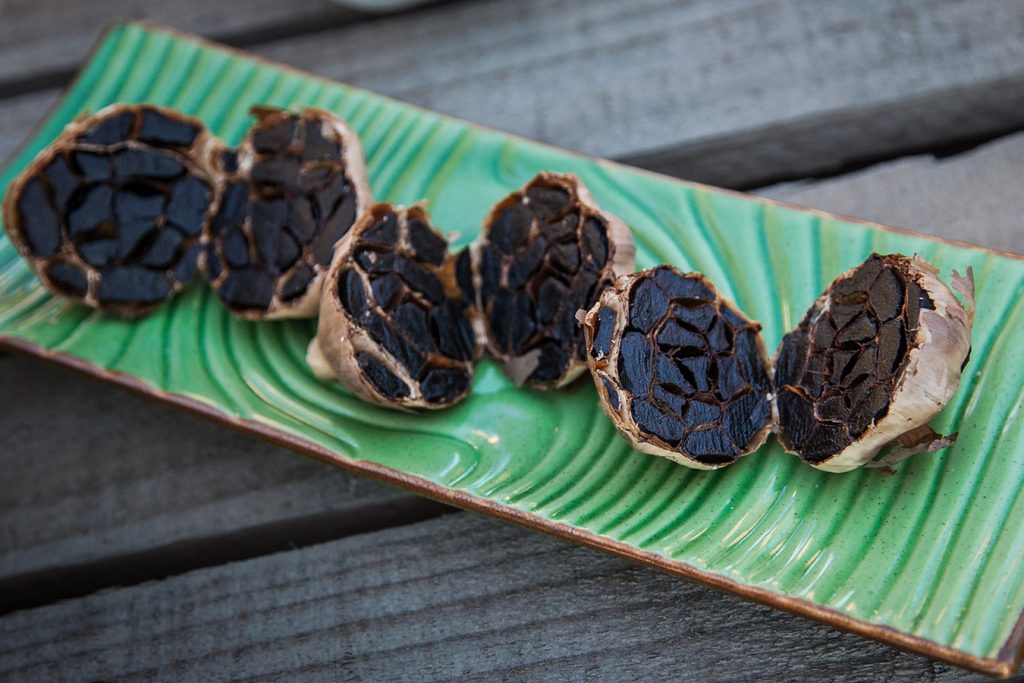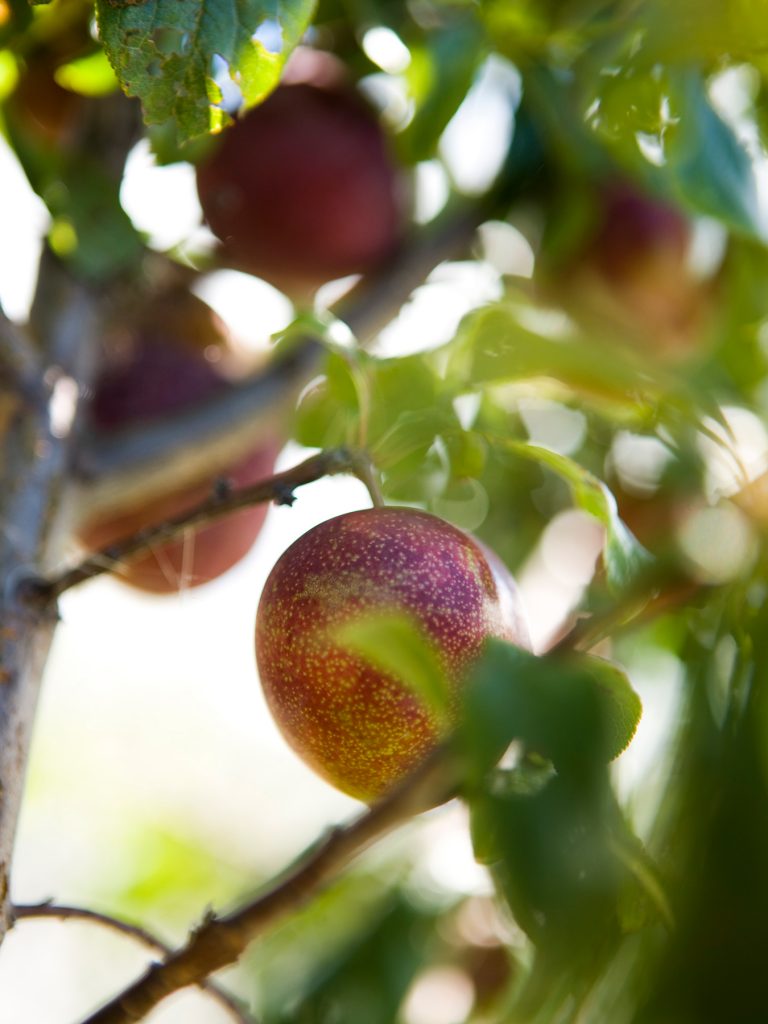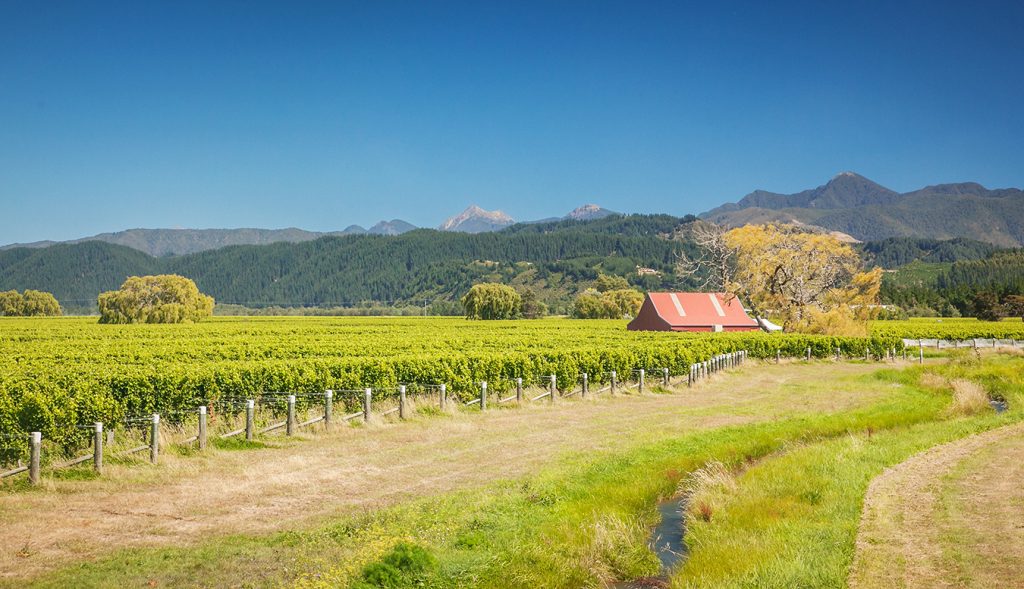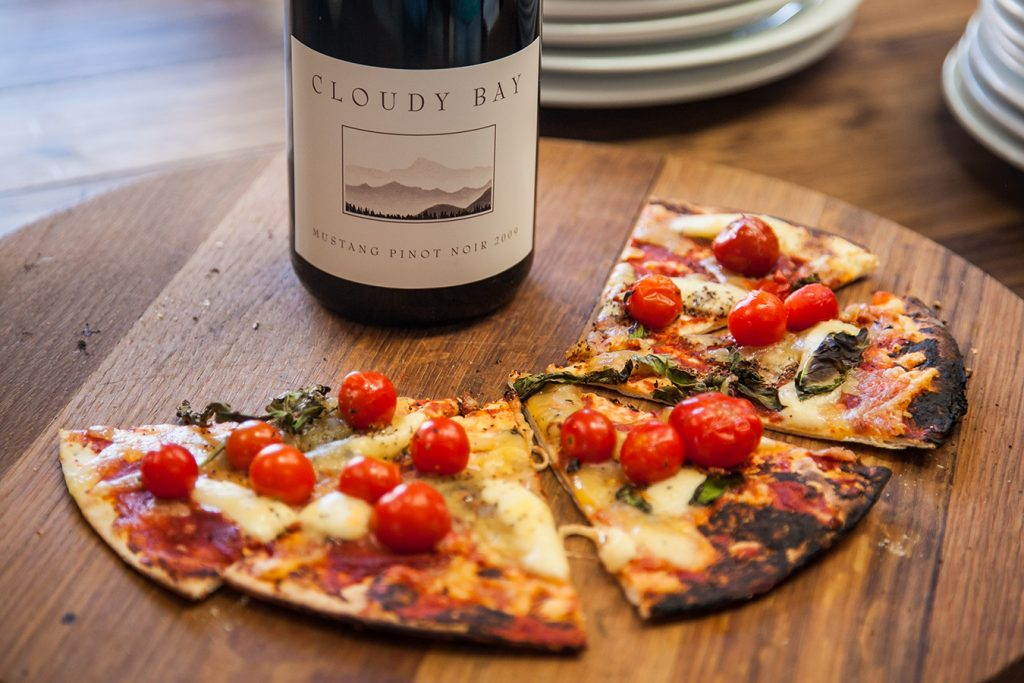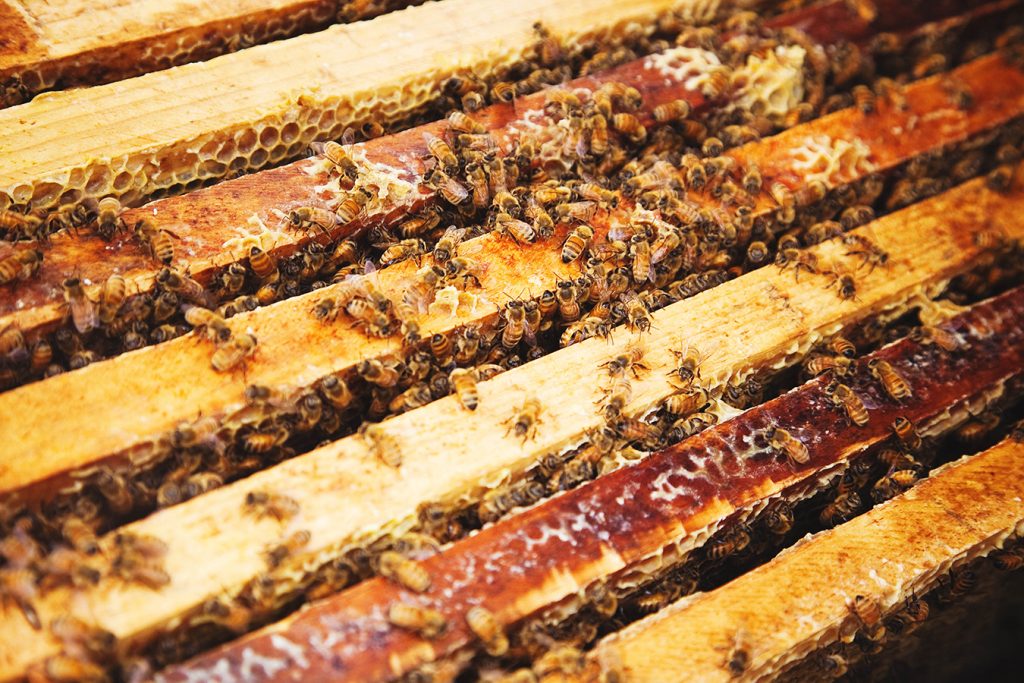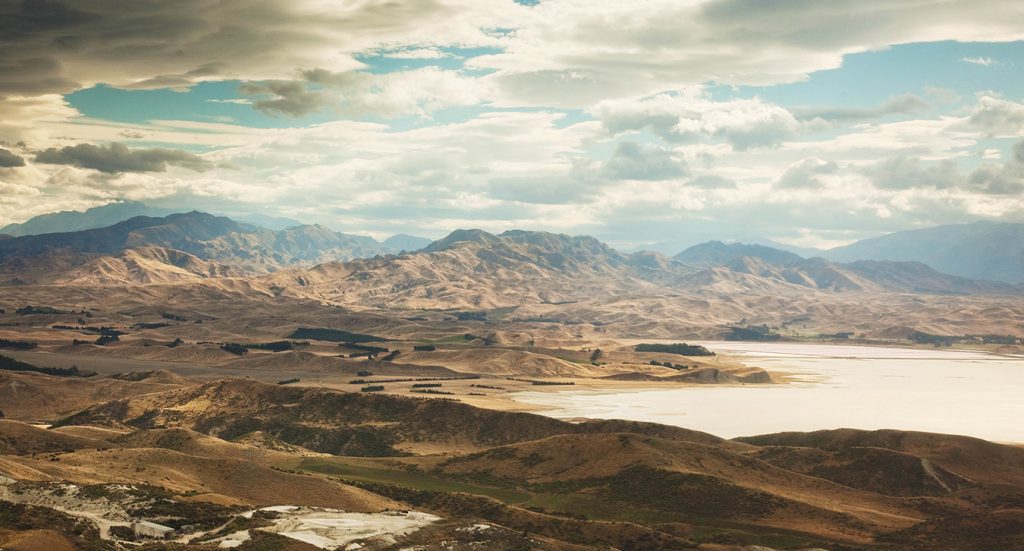Picture the opening credits of Magnum, P.I. (really)—a helicopter traces a line over rugged coastline, Tom Selleck traipses through a tangle of trees, a snorkel and rotund posterior buoys above the water. Now just replace Oahu with New Zealand’s South Island, criminals with edible critters, Old Düsseldorf in a long neck with bottles of sauvignon blanc, and car explosions with a 10-course chef’s degustation dinner (which did go pow on the palate), and that’s a close approximation of what Cloudy Bay Vineyards’ two-day Forage event felt like.
No, Tom Selleck wasn’t there, but there was another pair of impressive eyebrows. They belonged to Auckland-based chef Simon Gault, a Kiwi celebrity for his ongoing stint on the reality television show MasterChef New Zealand and the parcel of restaurants he oversees under his Nourish Group banner, among many other culinary notches. He returned to Cloudy Bay Vineyards’ Blenhiem base for the second summer in a row to create an elaborate wine-matched meal for a coterie of international writers.
Eat, drink, and merrily take a few tasting notes; that’s usually how these things go. But this is Forage, set in the adventure capital of the world, so food and wine scribes don’t get away with simply writing for their dinner—they have to really work for it. Each guided by a member of Cloudy Bay’s oenological quartet (winemakers Tim Heath, Nick Blampied-Lane, and Sarah Burton, and viticulturist Jim White), four groups were dispatched to the four corners of the ecologically rich Marlborough region to apprehend their own aliments.
My cohort, three ladies led by Lane, set off at sunrise in a single-engine Cessna. Crossing over one of the ranges that cradle the Wairau Valley, landing less than 100 metres from rocky shoreline in knee-high grass on Cape Campbell. We slithered into wetsuits and slipped on fins and snorkels to free dive for our first round of supper suspects: rock lobster (or cray as it’s colloquially known) and pāua (the Māori name for abalone). The latter can only be caught by free diving; it is actually illegal to harvest the mollusks with the assistance of scuba equipment. There are strict limits on how many pāua can be gathered, recreationally and commercially; the limit is 10 pāua per day for recreational fishers, but with a personal average of one pāua an hour, there’s no need to worry about that. There was a speargun for catching unsuspecting fish, but with the water so murky, it would only come in handy for a photo op later.
This is Cloudy Bay Vineyards’ Forage event, set in the adventure capital of the world, so we have to really work for our dinner.
Our guide to what lies beneath, Mike Ponder, gave us our first easy out of the day, bringing with him a bucket of his Cloudy Bay clams, both to eat and haul back to Chef Gault. The outfit wild harvests five species, two of which (diamond shell and tuatua) I discover are equally tasty eaten raw. Twenty-five per cent of what the clam company dredges is consumed domestically, at Gault’s Euro restaurant in Auckland, for one.
Our afternoon lunch spot, Cape Campbell Farm, calls this headland home; Rob and Sally Peter are its keepers, caring for some 4,000 sheep and 400 cattle across 3,300 acres. One needn’t be a journo or a farmhand to personally investigate their pastures; they offer a four-day walking tour around the Cape Campbell Track with cottage accommodation along the way. But the aforementioned professions do afford a fortitude-testing 4×4 tour of the rugged hillsides and the opportunity to give an ewe a close shave. I was concerned I’d accidentally shear off a lamb chop in my attempt, but they weren’t relying on such a mishap for supper—a rump had already been sent over to the winery. Off the hook again.
With just three pāua and one-sixteenth of a lamb shorn, the Magnum feeling was waning, at least until the all-black Eurocopter Colibri arrived to take us to the honey. After lifting off, we retraced the Cape and flew inland. After hugging a tree-studded slope, we touched down in a wooded valley and were greeted by a pair bedecked in bee suits, husband and wife team Dale and Renee De Luca of Putake Honey. Their story could be a Portlandia plot line: He met a 150-kilo beekeeper named Sausage on a fishing trip, which inspired him to buy 150 hives. They sold their IT company and left Sydney, Australia, to move back to their native Marlborough to make honey. Picking plots for hives in out-of-the-way places (indeed, our return to civilization required more 4×4), they call what they do “extreme beekeeping.” They also approach it with a winemaking sensibility: it’s a honey “tasting” and the bottles read “vintage 2013”—just like grapes, the season affects the flavour composition. An attempt to extract the honey from the combs we collected using old-fashioned, hand-powered centrifugal force was short-lived; it required time and muscle. We were sent home with honey anyway.
Back at the winery, everyone’s loot was off-loaded—10 hours’ and 631 kilometres’ worth. Fallow deer from Glazebrook Station, Tio Point oysters, and milk from Wrekin Farm were among the others’ finds. While Chef Gault had a day to prepare, the gatherers got more familiar with the New Zealand natural resource they’re most familiar with: Cloudy Bay wines.
Sauvignon blanc put Cloudy Bay, and by extension Marlborough, on the map in the ‘80s. They were the first New Zealand winery to export, beginning with the 1985 vintage. While sauvignon blanc is still their archetype, Cloudy Bay has other cards up its sleeve. Pinot noir being one, and another challenge for the foragers: create a pinot to match an icon. No, not Tom Selleck, but a man of the same echelon and era was assigned to my group: Roger Moore. For our not-so-delicate blend, we simply branded it “Moore” with the tagline, “One glass is never enough.” No P.I. needed to ascertain that sophisticated winemaking isn’t in my future.
With that experiment, the amateurs’ jobs were done, and chef Gault’s gastronomy could masterfully mingle with Cloudy Bay’s varietals and vintages for the last supper. That pāua rolled together with crab, shiso, cucumber and mango, paired with 2011 Chardonnay. The Cloudy Bay clams combined with other mollusks in a tomato broth atop black garlic to be sipped with 2003 Sauvignon Blanc. Quintessentially Kiwi, the Cape Campbell lamb was married with mint jelly and peas and taken with twin pinots, 2010 Te Wahi and 2010 Mustang. To close, Putake honey was transformed into a heavenly dessert taco. A much better finale than Magnum, P.I. got. In that case, as with this year’s Forage, blame the writers.

